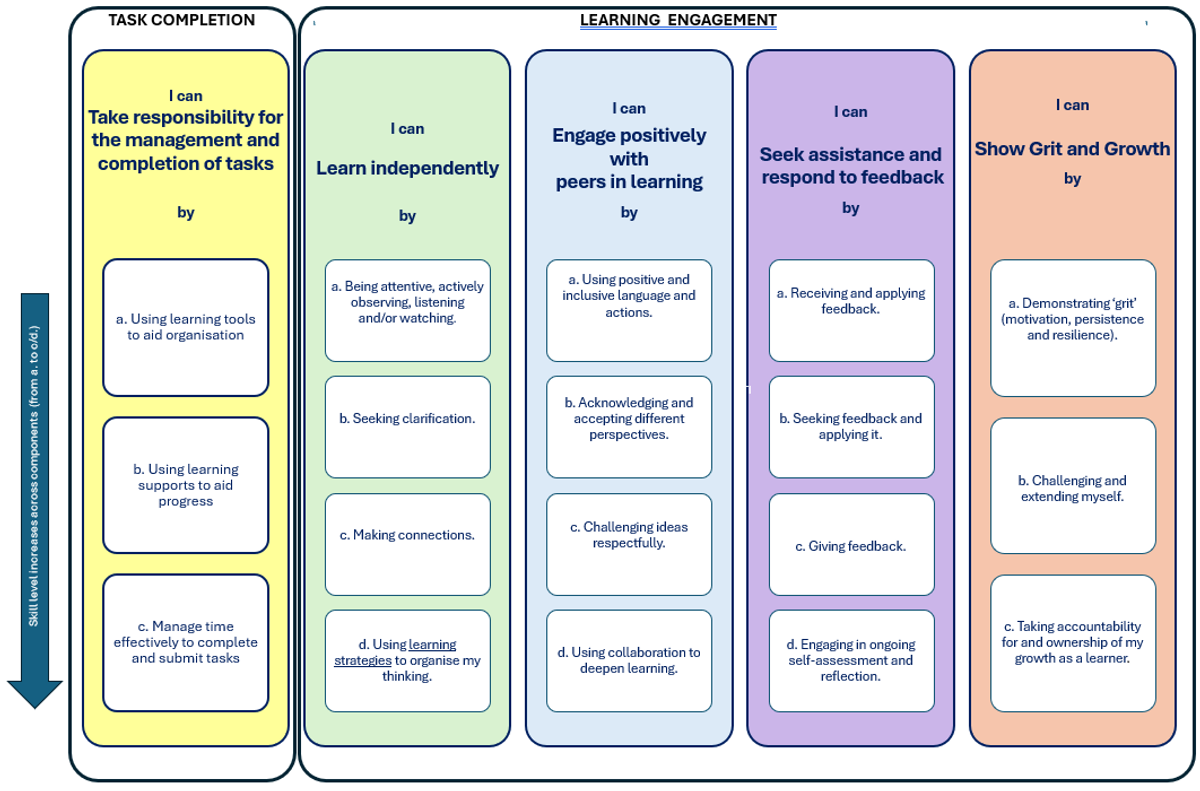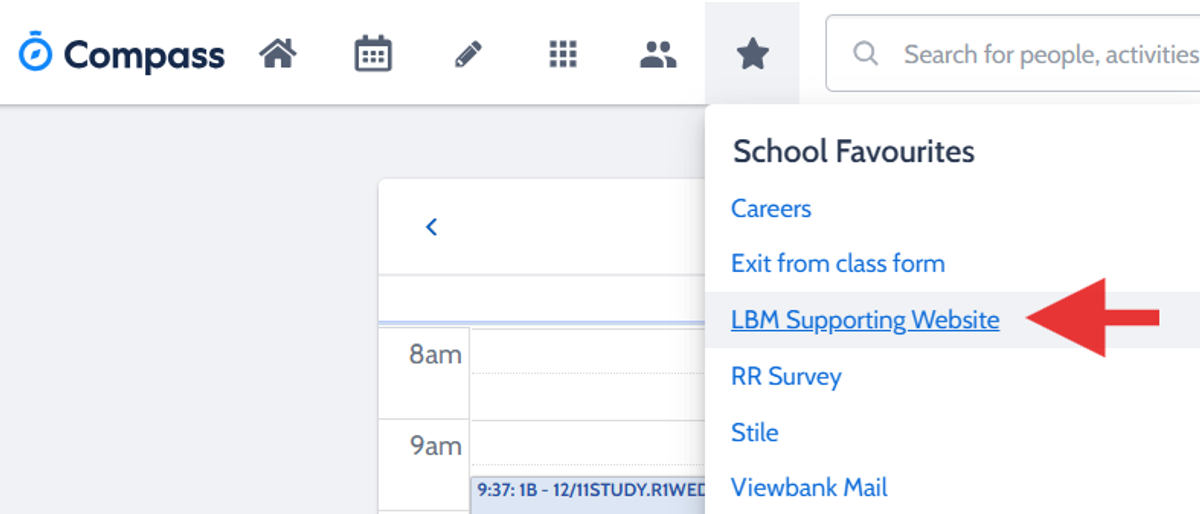Explaining our Learning Behaviours Continuum.

Learning behaviours are transferable, lifelong skills that are utilised by everyone to be successful
The Learning Behaviour Continuum has been updated in 2025. This video provides an overview: https://www.youtube.com/watch?v=UIOodoSEzP8-
Learning Behaviour Continuum Overview
Students and staff have co-created the Learning Behaviour continuum to support everyone to grow their skills to engage positively in their learning at school, outside of school and beyond. Learning behaviours are transferable, lifelong skills that are utilised by everyone to be successful, whatever role that they find themselves doing.
Our learning behaviour focus this time: Seek assistance and respond to feedback
These behaviours support you to become better at obtaining, providing and using feedback. Feedback is always about the task not the person. Beyond school, this means that you`ll be able to apply, and provide, constructive feedback that will lead to better outcomes. These behaviours are assessed on a scale from Trainee (Step 1) to Practitioner (Step 4).
Specifically, this time, we`re focusing on the ‘micro-behaviour’ b. Seeking feedback and applying it.
AT SCHOOL, knowing where you are with your learning NOW allows you to figure out how to get to where you want to go. Being able to obtain feedback – who to ask and where to obtain it, is what this behaviour is all about.
BEYOND SCHOOL, developing the mindset to actively seek feedback is transferable, lifelong skill. No matter what role you`re in, and what level you`re at, everyone can get better, whether it`s your first day on the job or you`re the boss. Seeking feedback from others and reflecting on where you`re at now (and what you can do to get better) means that you never stop growing.
Here is what this micro-behaviour can look like at each level of the Positive Learning Behaviour Continuum.
Students can access additional supporting resources on the ‘LBM Supporting website*’, accessible via the Compass -School Favourites menu (Star at top right). This resource allows students to pinpoint their current level and provides example strategies to grow this learning.
*This is an internal website – accessible to students and staff only – ask your young person to show you.
If you have any specific, additional examples of what this behaviour can look like, or examples of where it is used, we would really like to hear from you. If you have any additional suggestions, questions or wonderings around this behaviour, or the Learning Behaviour Continuum itself, please email learningbehaviour@viewbank.vic.edu.au and we`ll be in touch.
John Patterson




